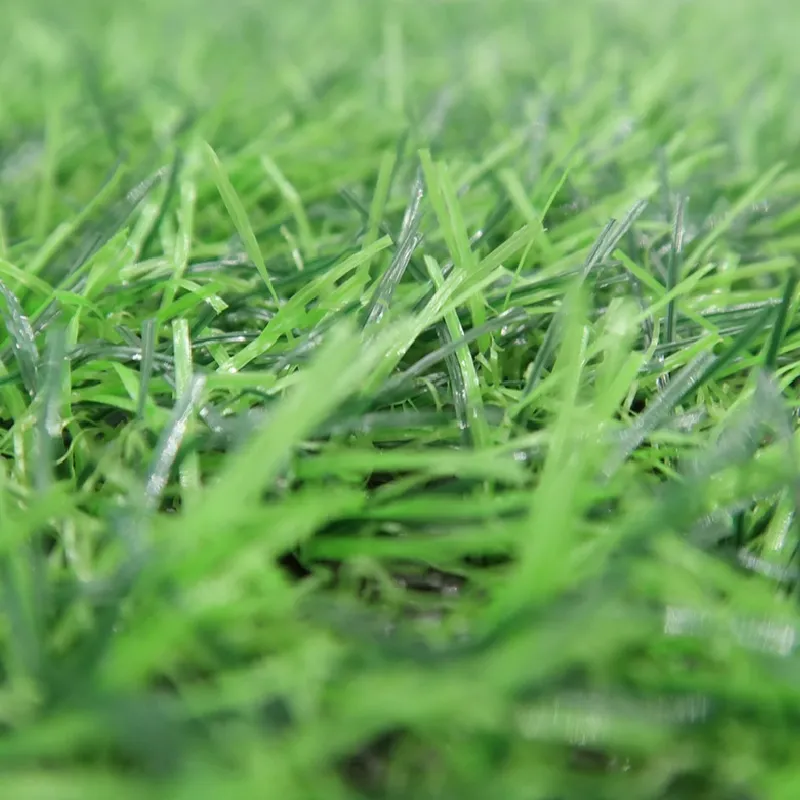
- Afrikaans
- Arabic
- Belarusian
- Bengali
- Czech
- Danish
- Dutch
- English
- Esperanto
- Estonian
- Finnish
- French
- German
- Greek
- Hindi
- Hungarian
- Icelandic
- Indonesian
- irish
- Italian
- Japanese
- kazakh
- Rwandese
- Korean
- Kyrgyz
- Lao
- Latin
- Latvian
- Malay
- Mongolian
- Myanmar
- Norwegian
- Persian
- Polish
- Portuguese
- Romanian
- Russian
- Serbian
- Spanish
- Swedish
- Tagalog
- Tajik
- Thai
- Turkish
- Turkmen
- Ukrainian
- Urdu
- Uighur
- Uzbek
- Vietnamese
Exploring the Benefits of Football Turf Grass for Enhanced Athletic Performance
Oct . 01, 2024 05:35 Back to list
The Importance of Football Turf Grass Enhancing Performance and Sustainability
Football is one of the most beloved sports worldwide, capturing the hearts of millions of fans and players alike. Whether it's played on a grand stadium or a local pitch, the quality of the playing surface plays a crucial role in the game’s dynamics. Among various options for playing surfaces, football turf grass has gained immense popularity due to its numerous benefits concerning performance, durability, and environmental sustainability.
Understanding Football Turf Grass
Football turf grass includes various types of grass that have been specifically cultivated for use on football fields. Natural grass is traditionally used, but advancements in technology have introduced synthetic turf, offering an alternative that mimics the look and feel of real grass. Common natural grass types include Bermuda, Kentucky Bluegrass, and Perennial Ryegrass, chosen for their resilience, growth patterns, and ability to withstand heavy foot traffic. On the other hand, synthetic turf is designed to withstand extreme weather conditions, resist wear and tear, and provide a consistent playing surface year-round.
Benefits of Natural Turf Grass
Natural turf grass offers several advantages that are essential for optimal gameplay. For starters, natural grass provides better traction and shock absorption than synthetic alternatives, reducing the risk of injuries such as sprains and fractures. The soft texture of natural grass is kinder to players’ joints, allowing them to perform at their best while minimizing stress on their bodies.
Moreover, natural turf has excellent drainage capabilities, reducing the likelihood of waterlogging and providing a firm surface for play even after heavy rainfall. The living organism acts as a natural air filter, absorbing carbon dioxide and releasing oxygen, contributing to a healthier environment. This quality makes natural turf grass an environmentally friendly choice, especially when managed sustainably.
The Rise of Synthetic Turf
While natural grass has many benefits, the increasing demand for sports facilities has led to the rise of synthetic turf. One of the most significant advantages of synthetic grass is its low maintenance requirement. Unlike natural grass, which needs regular mowing, watering, and pest control, synthetic turf requires minimal upkeep, allowing sports organizations to save time and resources.
football turf grass

Weather is another factor that contributes to synthetic turf's popularity. These artificial surfaces are not affected by seasonal changes, meaning they can be played on in various conditions without impacting performance. This reliability ensures that training schedules and matches are less likely to be disrupted by rain, snow, or extreme temperatures.
Additionally, synthetic turf has been designed with player safety in mind. Modern materials provide shock-absorbing properties that help reduce the likelihood of injuries. The consistent texture of synthetic turf offers reliable playing conditions, ensuring that players can adapt their techniques regardless of external weather factors.
Environmental Considerations
Amidst debates about the ecological impact of synthetic versus natural turf, it is essential to weigh the environmental implications. Natural turf grass needs water, fertilizers, and herbicides—resources that can lead to soil erosion and pollution if not managed correctly. However, with proper maintenance and sustainable practices, natural grass can contribute positively to local ecosystems.
On the other hand, synthetic turf is often criticized for being less environmentally friendly due to the materials used in production and potential heat retention. Nevertheless, advancements in sustainability are being made, with some manufacturers now producing environmentally-friendly surfaces that incorporate recycled materials and are free from harmful chemicals.
The Future of Football Turf Grass
The ongoing evolution of football turf grass will likely continue to impact the sport in significant ways. Innovations in both natural and synthetic grass technologies are paving the way for improved performance, reduced maintenance, and enhanced player safety. As the understanding of plant biology and materials science advances, the market for superior playing surfaces will only expand.
In conclusion, whether one prefers the natural feel of turf grass or the reliability of synthetic options, the role of football turf grass in enhancing the players' performance and the sustainability of the sport cannot be overstated. Striking the right balance between performance, maintenance, and ecological impact will remain a critical communication point for sports organizations as they plan for the future, ensuring that football remains a game played on quality surfaces, benefitting players and the planet alike.
-
The Benefits of Artificial Turf for Indoors
NewsJul.15,2025
-
How Artificial Grass Suppliers Ensure Quality Products
NewsJul.15,2025
-
Artificial Grass and Pets: A Space for Relaxation
NewsJul.08,2025
-
Balcony & Outdoor Decoration with Artificial Grass
NewsJul.08,2025
-
Best Indoor Artificial Grass for Home
NewsJul.07,2025
-
Best Pet Turf for Dogs: Safe & Durable Artificial Grass Options
NewsJul.07,2025
Products categories









